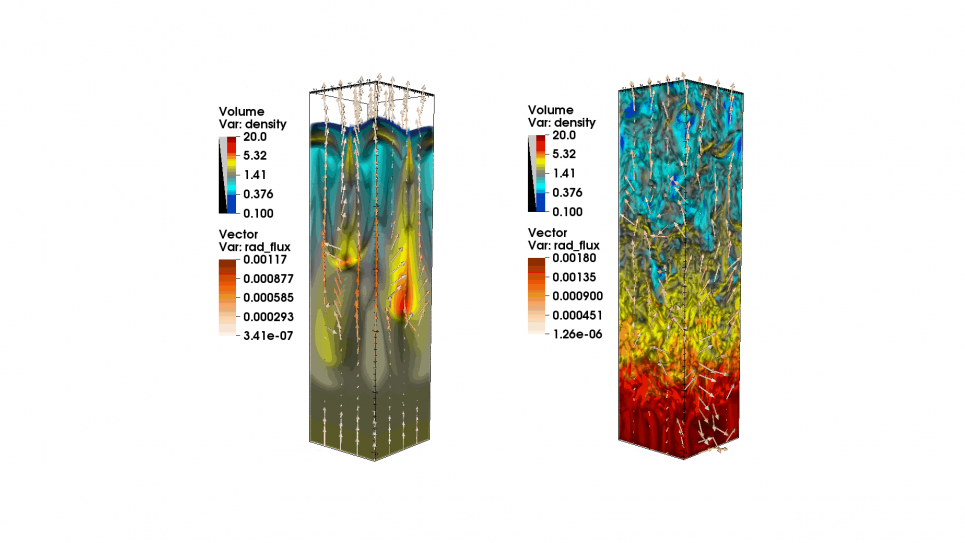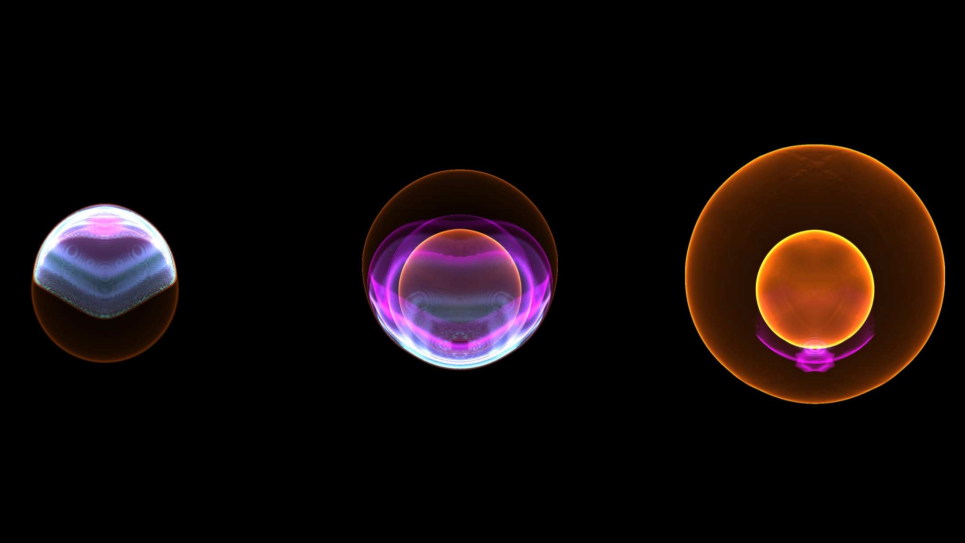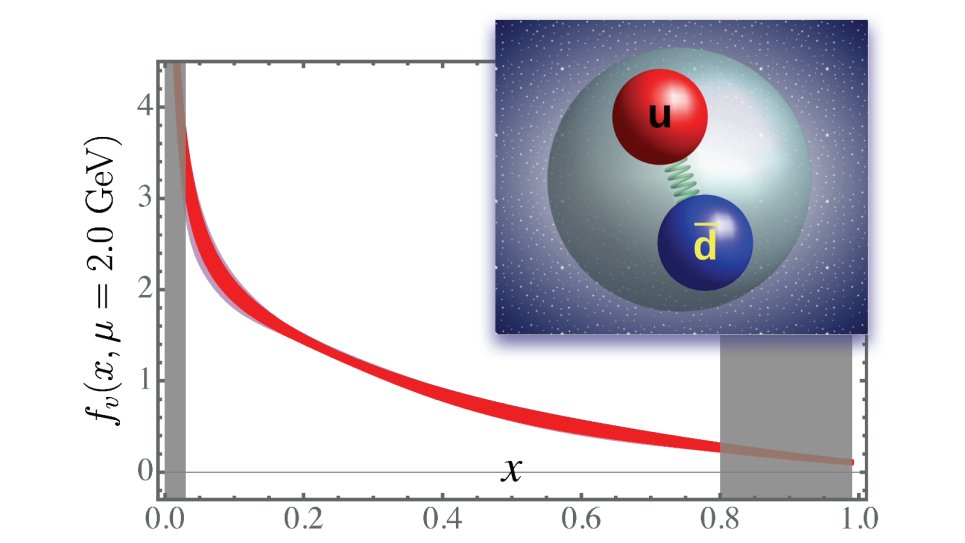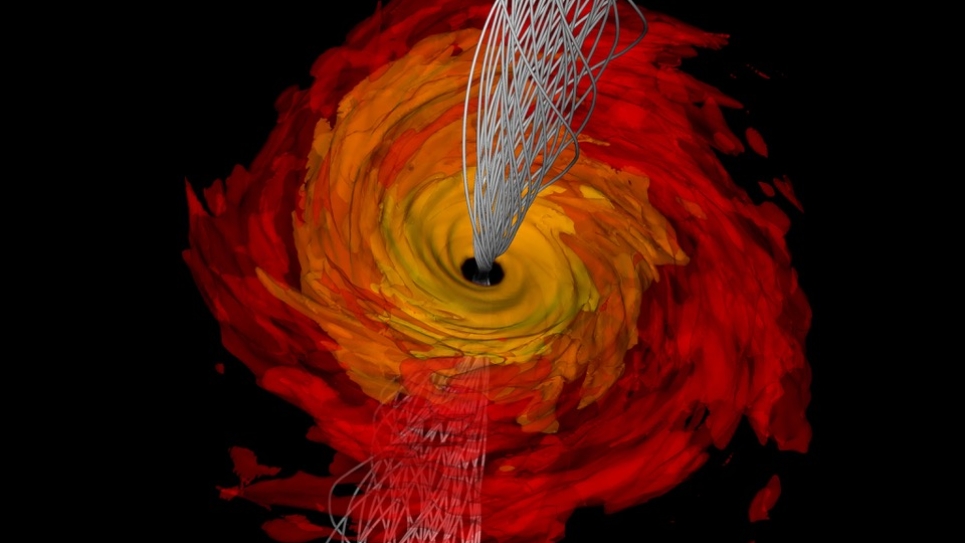
Global Radiation MHD Simulations of Massive Star Envelopes
Massive stars play an important role in many astrophysical environments. The radiative and mechanical energy output from massive stars are important feedback mechanisms regulating star formation and the structure of the interstellar medium in galaxies. One property that is particularly critical to the evolution and fate of massive stars is the degree of mass loss during stellar evolution. This includes both relatively steady winds and dramatic episodic mass loss eruptions. The mass loss rates during different stages of massive star evolution have large impacts on a star’s luminosity, lifetime, final fate (e.g., neutron star or black hole) and the properties of its resulting supernovae and nucleosynthesis.
The goal of this project is to study the global structure of the gaseous outer layers, or envelopes, of massive stars, accounting for different masses and different evolutionary stages. The team will conduct 3D radiation magnetohydrodynamic (MHD) simulations using the unique radiation code Athena++, which directly solves the time-dependent radiation transfer equation. The simulations will capture the global properties of the stars and winds,while still resolving the structure of the stellar atmosphere.
These multi-dimensional simulations will dramatically improve the understanding of the surface layers of massive stars, including mass loss via radiation-pressure driven winds. The results will be incorporated into 1D stellar evolution models to create more realistic massive star models, which will significantly improve our understanding of the structure and evolution of massive stars and lead to more realistic pre-supernova progenitor models for use in simulations of core-collapse supernovae.


